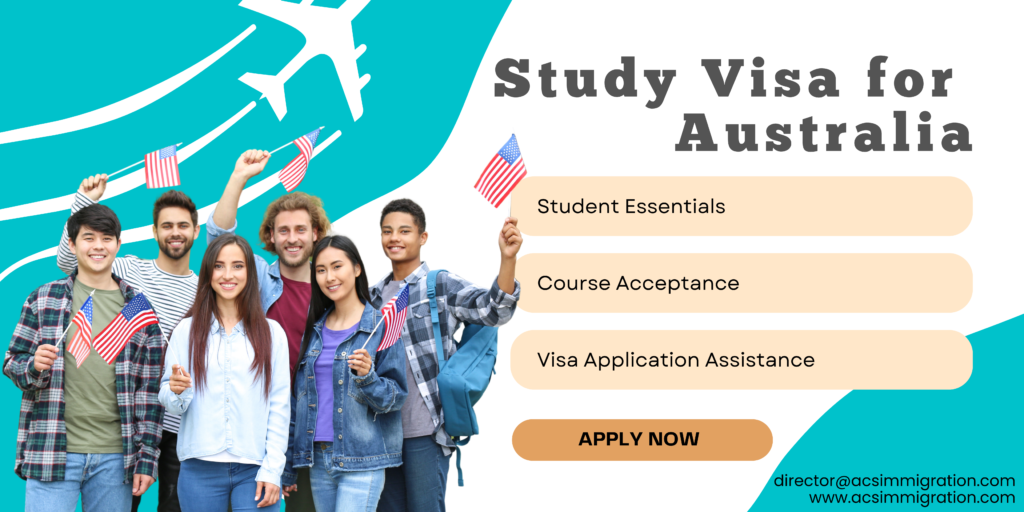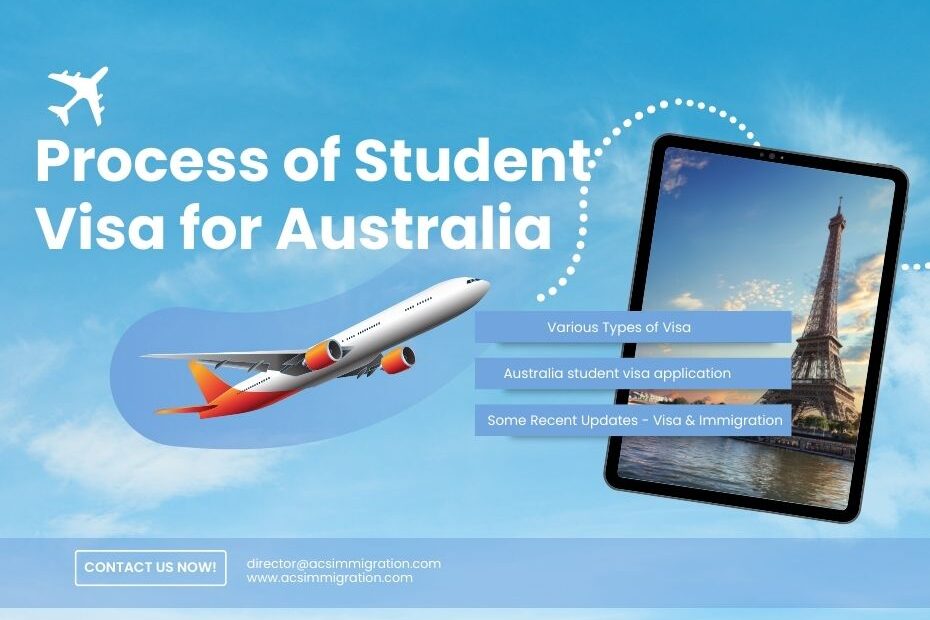What is Visa?
A visa is an official record that allows the bearer to legally enter a foreign country. The visa is usually verified or glued into the bearer’s passport. There are several different types of visas, each of which allows the bearer different rights and access in the host country.
For instance, a tourist visa allows the bearer to stay in the country for a limited period, usually for tourism purposes. A student visa allows the bearer to study at an educational institution in the country for a set period.
There are three kinds of visas available:
Tourist visitor: This is for the person who reaches Australia to travel or to see friends as well as relatives. This is open to anyone from all across the globe, including Australia.
Business visitor: For businesspeople who want to travel for a short time to do business, attend or negotiate events. You must submit your documents from someplace other than Australia.
Sponsored family visitor: Family members who are not Australian citizens or PR who are sponsored for a visit visa by an Australian citizen or PR. Parents of Australian residents as well as PR are given longer-term visitor visas to Australia.
General requirements
- A passport with a min validity of six months from the date of travel is needed.
- Photocopy of the passport’s biography page.
- Statement of economic resources through the most current bank account.
- Invitation letter from a supporter/friend/family partner in the overseas nation.
- Statement of the sponsor’s/friend’s/finances in the overseas nation.
- All documents of the sponsor’s passport.
- If you are married to an overseas national, you will need a marriage certification.
- In the case of minors, the parents’ birth certificates as well as marriage certificates, are a must.

Tourist / Visitor Visa:-
If you wish to visit a country as a tourist, for business, or even to visit family and friends living there, then you must apply for the appropriate type of visa.
You will have to apply for either a visitor visa or a business visa based on the goal of your visit. Please note that requirements and processing times for each type of visa may vary.
Tourist visas allow foreign visitors to enter a country for leisurely purposes such as tourism and sightseeing. It’s important to note that these visas come with an expiration date and don’t permit the holder to engage in any business-related activities while in the country.
That said, it’s worth noting that the application process, eligibility requirements, and necessary documents can all differ from one country to the next.
Visit / Business visas typically allow you to:
- Stay in the country for a while.
- Carry out commercial and financial transactions.
- Set up a temporary office.
- Travel in that country.
Australia Standard Visitor Visa
The Australia visit visa also called the Standard Visitor Visa is used by everyone to visit Australia.
The standard visitor visa has substituted the following visas to Australia:-
- Family Tourist visa.
- General Tourist visa.
- Child Tourist visa.
- Business Tourist visas, including visas for academics, doctors as well as dentists.
- Sports Tourist visa.
- Entertainer Tourist visa.
- Prospective Entrepreneur Tourist visa.
- Private Medical Treatment Visitor Tourist visa.
- Approved Destination Status (ADS) Tourist visa.
This Tourist visa permits you to stay for up to six months. If you’ve come to Australia for private medical therapy, you can extend your stay by paying extra payments. If you’re in the country for an educational program, you can extend your stay.
You can apply for a long-term Standard Visitor visa with a period of 2, 5, or 10 years if you require to stay extended in the country. During per visit, you can stay for a max of 6 months.

Student Visa for Australia
If you wish to Study in Australia, you would need to apply for and get an Australian Student Study Visa. The visa policies for an Australia Study visa have modified as well as a Simplified Student Visa Framework (SSVF) has been started from July 1, 2016, onwards.
As per the new visa policies implemented by the Department of Immigration as well as Border Protection and the Australian Government, all students planning to study in Australia must apply for Visa under Subclass 500 with impact from July 1, 2016.
Some Recent Updates – Visa & Immigration
As per the recent conversation between India’s Union of Education and skill Development as well as Entrepreneurship Minister Mr. Dharamedra Pradhan and Australian Minister of Education – Mr. Jason Clare on July 21, 2022, Indian students have been guaranteed by the Australian partner of expeditious resolution to their visa connected issues.
Also, there have been discussions related to maintaining partnerships towards skill building in educational sectors with inputs from Australia, for which it is globally known for. This, in turn, would prove helpful for both Australian and Indian students.
Temporary Skill Shortage:- This is a short-term visa introduced in Australia to cater to the skill shortage issue, by getting in more skilled employees through registered employers who are unable to source a suitable workforce for their organizations or businesses.
Those applying for this visa will have to pay AUD 1,290 and will be suitable to survive for up to 2 years and 4 years in case of International Trade Obligation. Also, this visa would allow applicants or workers to travel to Australia numerous times plus the ones who would be suitable will also be capable to apply for PR as well.
COVID – 19 Pandemic:- The Australian government has revealed that it will open its borders to international students from Dec 1, 2021. Fully vaccinated suitable visa holders (including international students) can come without applying for a trip exemption. Students having the right visas need to provide evidence of their vaccination status (should be vaccinated with an authorized vaccine) and a negative Covid-19 PCR test report was taken within three days of release. Australia has supported both the vaccines Covishield and made in India Covaxin. Also, travelers need to comply with the quarantine needs in the state or territory of their coming.

Main Elements of the new Simplified Student Visa Framework
Earlier the visas were classified under Immigration Risk where in students applying from certain nations were classified under Assessment Level Framework. The new policies have a new combined country. Immigration risk framework instead of the old Assessment Level Framework, and paper applications have always been discontinued. The New SSVF (Simplified Student Visa Framework) classifies the students’ based on both:
Nationality
Note, that a student’s nationality is classified by the passport. Irrespective of where the students are involved for the visa, the nationality on the passport would be evaluated. For example, an Indian student staying in the United States. Applying for a visa from the United States would be considered under the risk levels ad specified for India by the DIBP (Department of Immigration and Border Protection).
Education Provider’s risk of default
DIBP (Department of Immigration and Border Protection) has a set of standards that they use to identify which students fall under the streamlined or standard process. This process will populate a list of required documents for the student. It is advised that the student have all documents readily available as DIBP has the right to ask for any or all of these documents during the time of application.
For more details Visit Our Website
www.acsimmigration.com
Contact Us at +91-76192-76192
And Also Touch with us on our Facebook and Youtube Channel
